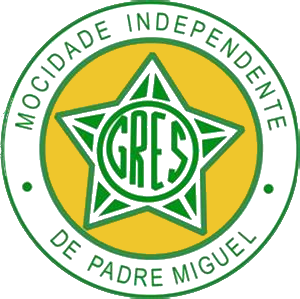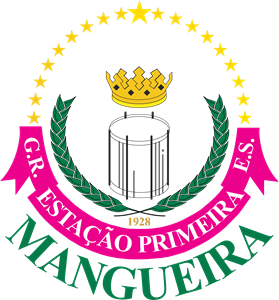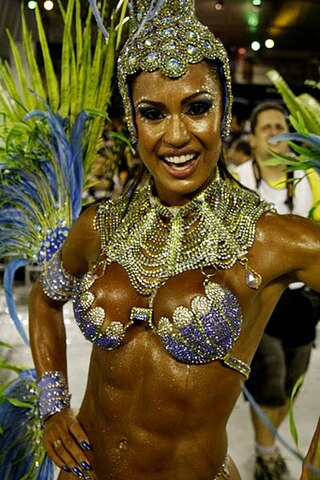
A samba school is a dancing, marching, and drumming club. They practice and often perform in a huge square-compounds and are devoted to practicing and exhibiting samba, an Afro-Brazilian dance and drumming style. Although the word "school" is in the name, samba schools do not offer instruction in a formal setting. Samba schools have a strong community basis and are traditionally associated with a particular neighborhood. They are often seen to affirm the cultural validity of the Afro-Brazilian heritage in contrast to the mainstream education system, and have evolved often in contrast to authoritarian development. The phrase "escola de samba" is popularly held to derive from the schoolyard location of the first group's early rehearsals. In Rio de Janeiro especially, they are mostly associated with poor neighborhoods ("favelas"). Samba and the samba school can be deeply interwoven with the daily lives of the shanty-town dwellers. Throughout the year the samba schools have various happenings and events, most important of which are rehearsals for the main event which is the yearly carnival parade. Each of the main schools spend many months each year designing the theme, holding a competition for their song, building the floats and rehearsing. It is overseen by a carnavalesco or carnival director. From 2005, some fourteen of the top samba schools in Rio have used a specially designed warehouse complex, the size of ten football pitches, called Samba City to build and house the elaborate floats. Each school's parade may consist of about 3,000 performers or more, and the preparations, especially producing the many different costumes, provide work for thousands of the poorest in Brazilian society. The resulting competition is a major economic and media event, with tens of thousands in the live audience and screened live to millions across South America.

Grêmio Recreativo Escola de Samba Acadêmicos do Salgueiro, popularly known simply as Salgueiro is a popular samba school from Rio de Janeiro, Brazil. It was established on March 5, 1953 from the merger of Morro do Salgueiro's two samba schools called Azul e Branco do Salgueiro and Depois Eu Digo, which then merged again with Unidos do Salgueiro. It first paraded in 1954 with the Romaria à Bahia samba. The school's motto is "Not better, nor worse, just a different school".

The Carnival in Rio de Janeiro is a festival held every year before Lent; it is considered the biggest celebration of Carnival in the world, with two million people per day on the streets. The first Carnival festival in Rio occurred in 1723.

The Grêmio Recreativo Escola de Samba Mocidade Independente de Padre Miguel is a samba school of the city of Rio de Janeiro, being located on Rua Coronel Tamarindo, in the neighborhood of Padre Miguel.

João Eduardo de Salles Nobre, known as Dudu Nobre, is a Brazilian composer and singer.
Liga Independente das Escolas de Samba do Rio de Janeiro, commonly known by the acronym LIESA, is the principal association that organizes the Carnival of the city of Rio de Janeiro.
The Liga Independente das Escolas de Samba de São Paulo - Independent League of the Samba Schools of São Paulo - or LigaSP is an entity that administrates the Special and Access Groups of the Carnival of São Paulo.

The Grêmio Recreativo Escola de Samba Portela or Portela for short, is a traditional samba school, founded in 1923, in Rio de Janeiro, Brazil. The school has the highest number of wins in the top-tier Rio parade, with 22 titles in total, including the 2017 Carnival parade.
The União das Escolas de Samba de São Paulo – Union of the Samba Schools of São Paulo – or UESP is an entity that organizes the parades of the Carnival of São Paulo, SP, Brazil.
The Grêmio Recreativo Escola de Samba Acadêmicos do Grande Rio is a samba school of the Special Group of the carnival of the city of Rio de Janeiro, being headquartered on Almirante Barroso street in Duque de Caxias.

Yvonne Lara da Costa OMC, better known as Dona Ivone Lara, was a Brazilian singer and composer. Known as the Queen of Samba and Great Lady of Samba, she was the first woman to sign a samba-enredo and take part in a wing of composers in the school, Império Serrano.

Grêmio Recreativo Escola de Samba Estação Primeira de Mangueira, or simply Mangueira, is a samba school in Rio de Janeiro, Brazil. The school was founded on April 28, 1928, by Carlos Cachaça, Cartola, Zé Espinguela, among others. It is located in the Mangueira neighborhood, near the neighborhood of Maracanã.
The Grêmio Recreativo Escola de Samba União da Ilha do Governador was founded on March 7, 1953 by the friends Maurício Gazelle, and Quincas Orphylo, who were in Cacuia, the main site of the carnival parade of the Ilha do Governador, watching the presentation of small schools of samba and blocks of various districts of the island. It was then decided that the neighborhood of Cacuia should be represented by a samba school. Currently, the school is based in Estrada do Galeão in the neighborhood of Cacuia.

Sandra Cristina Frederico de Sá is a Brazilian singer and songwriter.

Grêmio Recreativo Escola de Samba Unidos de Vila Isabel is a samba school in Rio de Janeiro. It was thrice champion of the Special Group and is currently headquartered in Boulevard 28 de Setembro in Vila Isabel.

Gracyanne Jacobina Barbosa Vieira is a Brazilian fitness model and Carnaval dancer.
The Liga das Escolas de Samba do Rio de Janeiro is the leading association that organizes the Série A Group in the Carnival in Rio de Janeiro.
The Grêmio Recreativo Escola de Samba São Clemente is a samba school from Rio de Janeiro, located in the Cidade Nova neighborhood, on Avenida Presidente Vargas.
The Grêmio Recreativo Escola de Samba Estácio de Sá is one of the most traditional samba schools of the city of Rio de Janeiro. It has won once the top-tier Rio parade in 1992.

Are the alloys of carnival that organize the parades conducted outside the Marquês de Sapucaí. The LIESB took over the organization of the lower level divisions'. In 2015, disagreements on the board of AESCRJ led the organization to suffer intervention by RioTur on the eve of the carnival. because of this, after the carnival that year came the LIESB and Samba é Nosso. where twelve of fourteen guilds of the Série B decide founded the LIESB and part of the samba schools Série B and all schools of Series C, D, E in Samba é Nosso.












